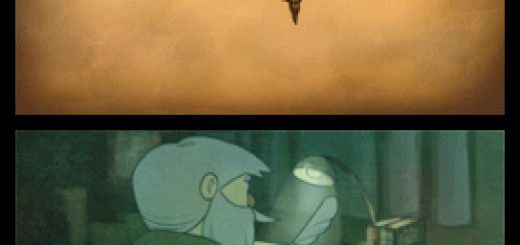Mah Jong Quest Expeditions review
Before we start let’s clear a common misconception up. Mah Jong is an old four player Chinese game (primarily for gambling) that typically uses 144 hand painted tiles. Mah Jong’s origins are still speculated to this day and to make matters more confusing there are many other offshoot games which have lazily been dubbed as Mah Jong too, so to be sure if you are playing Mah Jong or one of its siblings takes some research. As it turns out the version of Mah Jong I’ve played on computer over the years is actually known as Solitaire Mah Jong (or single player Mah Jong), it may not sound like a big difference but they are actually quite different games and it is quite annoying to find out that I’ve had such a big misconception of the game for such a long time. But now I’m happy I know which version I am playing when I turn on my DS. Right with that out of the way let’s get onto the Mah Jong Quest Expeditions review.
You have probably guessed by now (after my spiel) is that Mah Jong Quest Expeditions for DS is indeed based on the Solitaire version which you may have played yourself at one time or another. Mah Jong Quest Expeditions has been developed by iWin.com; they have lots of experience with Mah Jong games after producing over 20 different Jong titles on their popular flash website. The simple aim of the game is to match Mah Jong tiles (usually pairs) until none remain, the tiles themselves are stacked in piles onto the board in special patterns which generally only provide two or three different solutions thereby introducing the addictive strategic element. If you simply keep picking pairs there is a good chance you will get stuck with many tiles left but none that pair up and will be forced to restart, you’ll need to study the board before making choices in a similar way to thinking ahead moves in a game of chess. Mah Jong Quest Expeditions DS has three main game modes; Quest, Classic and Puzzle – each full to the brim with tile matching action.
Quest: Kwazi, a young Chinese teenager is walking down the street when a strange energy force causes the world so divide. He is inadvertently caught in the middle of the energy bolt and the power ends up splitting his metaphysical being into two different bodies; a boy and a girl. He is dressed in white and his female alter ego (for want of a better explanation) is dressed in black. Now this is where you the puzzle solver comes along. Your goal is to clear enough Mah Jong tiles in order to free them from each board (by pairing the hat tiles) so they can proceed in their goal to realign the world. This nice little story really only strings together the fact that you need to complete 64 progressively difficult Mah Jong boards in this mode, you do get some nice artwork and some cut-scenes to accompany the levels (as well as a fortune cookie at the end of each board). The Quest gameplay is generally as you’d expect, though the addition of special tiles which have powerful effects on the board make things a little more interesting. Here are a couple of my favourite new tiles to use to your advantage; Dynamite which blow ups obstructions and Magic Wands which can change the suit of certain tiles.
Classic: As the name suggests this is the standard Mah Jong mode with none of the special tiles that you’ll find in Quest and Puzzle mode. This is pure Mah Jong Solitaire at its very best and what the purists will be after, but if you do fancy adding some extra spice to proceedings why not choose one of the alternative game sequences which can do such wacky things like randomly move tiles around as you play.
Puzzle: Similar to Classic mode but this time the boards are more straight forward in design but now only have one solution which really makes the time limit feel shorter as you struggle to work out the correct matching sequence. The undo and restart buttons come into play in this mode more than in any other. As with classic mode you can change the game sequences for added mayhem but you’d have to be a pretty hardcore Mah Jongg fan in my opinion.
Graphically Mah Jong Quest Expeditions for DS are pretty decent; everything is sharp and clear and oriental typically looking, the comic book style sequences in Quest mode are rather nicely done too. Due to the small size of the tiles on rare occasions they can be slightly obscured but the ability to flip the board horizontally or vertically solves this little problem and can even help you spot pairs when you’re going tile blind. The music and sound effects are oriental and rather good too; the soothing music helped me relax before bedtime so not only did I have fun gaming, but I got a good night’s rest as well.
Mah Jong Quest Expeditions DS is a good puzzle game for the DS, it plays very nicely and is a perfect title to carry around with you for portable gaming. Coming in at a great budget price (£19.99) I don’t think you can’t go wrong as it features about 128 different boards (or layouts) which will take a fair time to complete unless you’re a professional MahJong player. The addition of an undo button, simple touch screen (or dpad) controls and the special tiles make things feel more accessible, up to date and well worth a purchase for all puzzle/board game fanboys and fangirls. Sadly there is no multiplayer mode to be found, it would’ve nice to get a bit of head to head match making but nevertheless I give MahJong Quest Expeditions a rather good 7 out of 10 and can highly recommend playing it in bed as opposed to reading a trashy novel.
Related: Professor Layton and the Curious Village review, Soul Bubbles review




